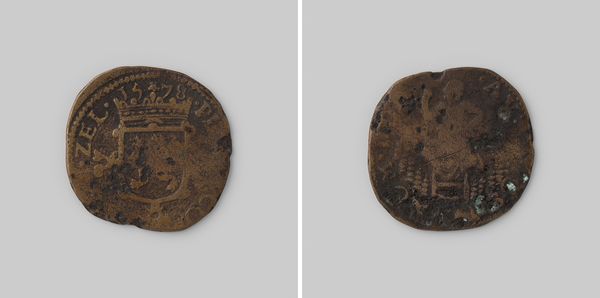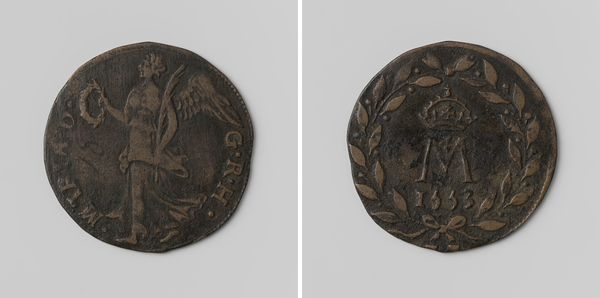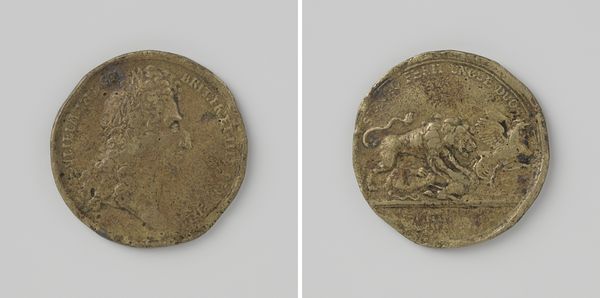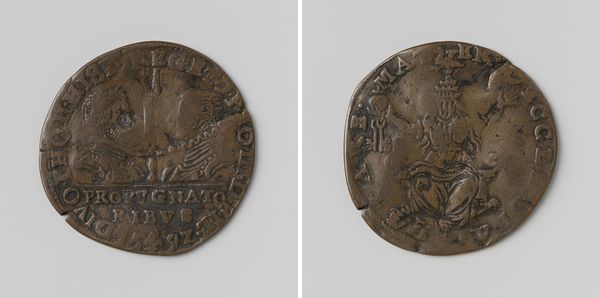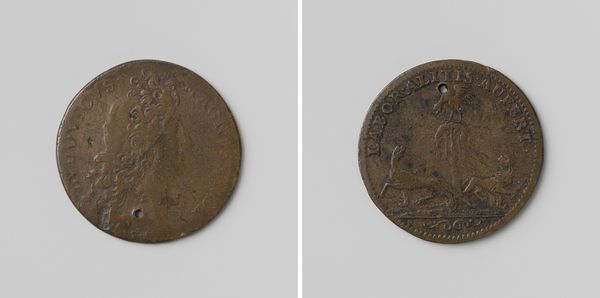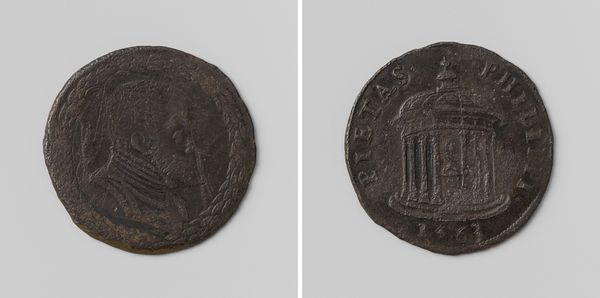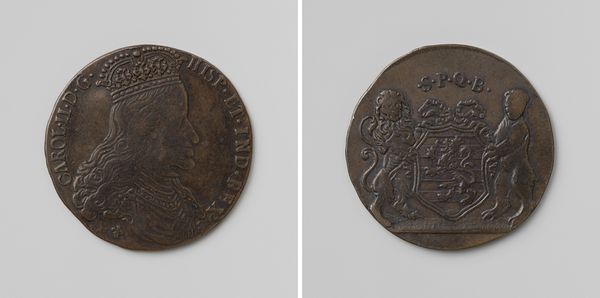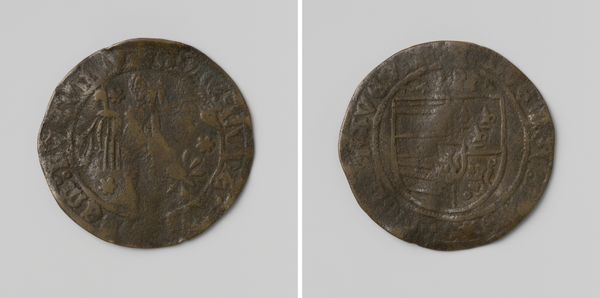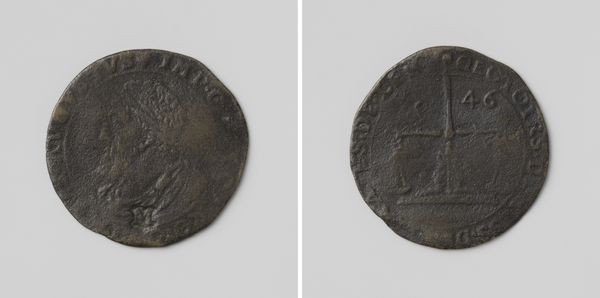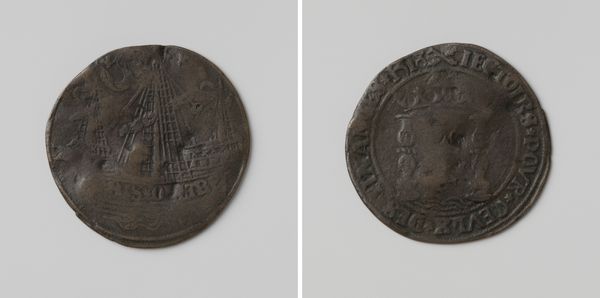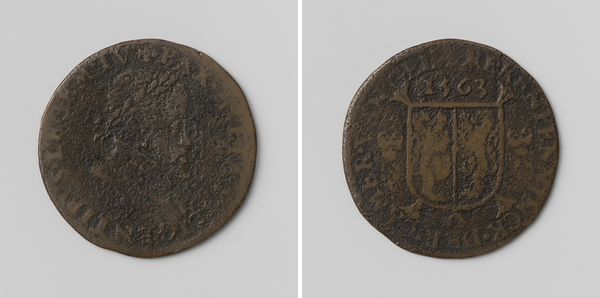
print, metal, relief
#
portrait
# print
#
metal
#
sculpture
#
relief
#
geometric
#
ancient-mediterranean
#
miniature
Dimensions: diameter 3.1 cm, weight 4.43 gr
Copyright: Rijks Museum: Open Domain
Editor: So, here we have a fascinating metal print from 1592 titled "Afwijzing van de vredesvoorstellen van Rudolf II, Duits keizer," or "Rejection of the Peace Proposals of Rudolf II, German Emperor". It's housed at the Rijksmuseum and created by an anonymous artist. Given its diminutive size, the level of detail is remarkable. I'm curious to learn more about its story; how do you interpret this work within its historical context? Curator: It's a powerful image. As a historian, I immediately think about the socio-political climate of the late 16th century. This print, depicting the rejection of peace proposals, speaks volumes about the religious and political tensions brewing in Europe. What symbols do you recognize on the coin and what could it possibly represent? Editor: I see a crowned coat of arms featuring a lion over what look like waves on one side, and what appear to be some sort of animal figure, potentially an ox on the other. The lion must represent the Dutch Republic, right? And the waves, its maritime power? I am not sure about the ox or other livestock. Curator: Precisely! The lion represents the Dutch Republic, and the waves allude to its control of waterways and seafaring trade. The waves tell of the country's reliance on water. So the coin commemorating the rejection of peace proposals underscores Dutch resolve for independence, even in miniature, reflecting how crucial maritime strength was to that national identity. Does that national context affect your feelings about the work? Editor: It does. Knowing this was about Dutch independence and its link to naval power changes my understanding quite significantly. What's particularly interesting is how a coin could function as a form of propaganda. Curator: Exactly! Currency in this era was a public statement. The circulation of such imagery had profound impacts on shaping and mobilizing public opinion. We see a deliberate effort to broadcast national strength and resistance. Editor: I never thought of coins as such politically charged objects! I’ll definitely look at art from this era differently now, considering the political undertones. Curator: I'm glad this perspective resonated! Context unlocks deeper meanings, transforming our viewing experience.
Comments
No comments
Be the first to comment and join the conversation on the ultimate creative platform.
